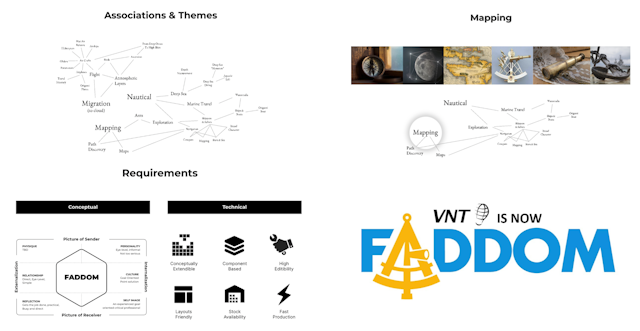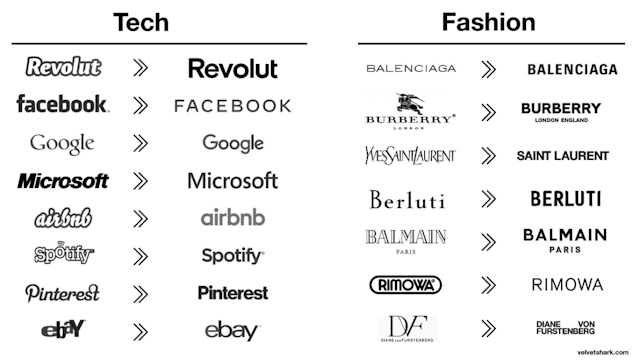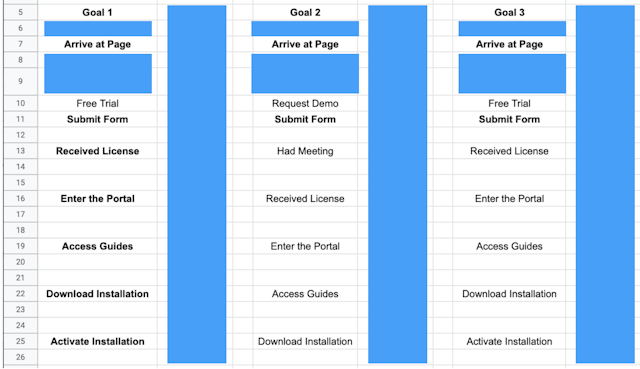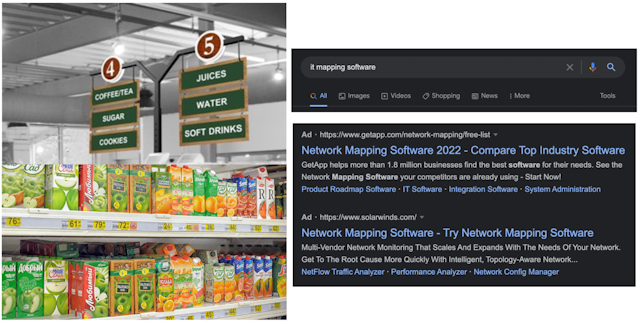This is what happens when marketing theory meets the real world in a tech startup
As a columnist for The Drum, Samuel Scott has pulled no punches on what marketers need to do to fix their promotion mix. But saying is one thing, doing another. So here’s what happened when this industry commentator was given the challenge of putting his marketing theory into practice.

Samuel Scott set out to put his marketing theory into practice in Tel Aviv's startup scene / Adobe Stock
In January 2022, I became the head of marketing for the Israeli hybrid IT mapping software startup Faddom after the chief executive had recruited me.
Spending two years stuck at home – with the conference speaking circuit not returning until later this year – was not healthy. I was bored and wanted to return to the industry after a five-year absence. Six months later, I wanted to show some examples of what we have done so that others might gain some insights for their companies as well.
But first, a few caveats. We do not sell anything to marketers, so I can write without any conflict of interest. Also, I have permission to discuss concepts but not to show any numbers or specific results. In addition, I want to give credit to the head of growth as well as the sales and R&D teams for their contributions.
And keep in mind that a lot of work has been ‘quick and dirty’ while I have been a marketing department of one who has been juggling many duties. So, here we go.
Create a brand at the beginning
There are many ways to explain ‘brand.’ One of my favorites is ‘function plus something’ (and the ‘something’ is what exists in peoples’ heads). Nike is ‘sport shoe plus toughness’ (“Just do it”). Liquid Death is ‘canned water plus straight-edge punk’. Justin Bieber is ‘singer plus entitled man-child’.

One of the reasons that I joined Faddom was that the company had already created a brand with Israeli creative director Ori Parziat. I would not need to spend time trying to explain the importance of doing so to everyone. Faddom is ‘IT mapping plus sailing’.
The company’s cofounders all served together in the Israeli navy and have a love of the sea. The imagery of ships, sailors, and maps is everywhere. The name itself is a play on the word ‘fathom’, which is a nautical unit for a depth of six feet as well as a word that means to understand a complex problem.

In a column earlier this year, I discussed the importance of using things such as characters to build distinctive brand assets that create mental availability in a B2B context. I have encouraged Faddom to do that on everything from PPC landing pages (see the left) to the product’s UI itself (see the right).
Of course, our product aims to differentiate itself from the competition in terms of functionality. But to me, it is just as important for the brand to be distinctive – to stand out and get remembered.
One example of a problem that I want to avoid: many logos today are all boring and increasingly look the same. For example, here is a comparison that growth consultant and QuickNode developer advocate Radek Sienkiewicz has published.

Every company has a different funnel
When marketers think about funnels, they often picture a vague process of getting awareness, consideration and then conversion. But the real world is more complicated.
At Faddom, my most important job right now is to ensure that we reach – and preferably surpass – a specific number of product installations within a certain amount of time.

To do that, I first walked through the various step-by-step processes by which installations occur. One example might be someone arriving at a website page, submitting a free trial form, receiving a free trial license, clicking to enter a user portal, accessing the installation guides, downloading the installation and then activating the installation.
This is one actual funnel for Faddom after someone arrives at our website or landing page. (Every company will have a different funnel.) As is probably unsurprising, some people ‘drop off’ at every step of the process. Say that 100 submit the free trial form. 80 might enter the user portal. 60 might access the guides. 40 might download the installation. And in the end, 20 might actually activate it.
I run the numbers for each stage of the funnel and calculate the percentage of people who ‘drop off’ at every step. (Getting the initial lead is only the beginning.) The steps with the highest drop-off rates are the parts of the ‘ship’ with the biggest ‘leaks’ that need to be fixed.
Tip: one of our developers is creating an integration with our various marketing and sales applications to build a dashboard where we can quickly retrieve these full funnel statistics for any date range similarly to how Google Analytics works.
Questions to consider: which steps of the funnel have the biggest leaks? Why is that? How can we fix it? Can we – and should we – reduce the number of steps? And that takes us to the next part of the process.
Market research on a budget
The Great Resignation – which no famed marketing futurists seem to have predicted for last year – has consisted of workers leaving jobs at which they felt underpaid, overworked or both. I have seen something similar in a greater context.
Many for-profit companies have often gotten people to work for them for free. Event speakers. Awards judges. Online forum moderators. Blog contributors. Hackathon developers. Unpaid interns. But today, more people are saying, “F— you, pay me.” After all, ‘exposure’ is a medium of exchange that is more worthless than cryptocurrency.
Now, take the above full-funnel analysis. Whenever we ask people for the reason that some issue exists, they are increasingly responding with demands for many pennies for their thoughts. And I cannot blame them.
So, what did we do? Obviously, early-stage startups cannot afford expert-run focus groups and statistically significant detailed market research. Instead, our chief executive has given us a set budget every month – in the form of expensive Amazon gift cards – to use to talk to people.
What to ask your customers
Faddom recently hired a head of product, who will essentially be the intermediary between our users and the R&D team. He will talk with the users and help to determine what features we should add to the platform in the future.
In that context, I plan to work with him and ask people (both users who installed and those who never did) questions such as these for marketing purposes:
What IT and tech publications and websites do you read? What IT and tech communities have you joined? Whose opinions do you trust when it comes to IT tools and software? What is happening at work when you start to think about IT mapping (category entry points)?
How do you typically learn about new IT tools and software? What is one thing that an IT software company can say or do that will convince you to sign up for a free trial immediately? What is your decision process for deciding what tools to use?
When you want to use a new paid tool at work, what is the approval process? How can that approval process become shorter and quicker? What can impede you at work from using the tools that you want?
My goal? To use the answers to generate additional insights for future marcom campaigns.
Segment and target strategically
One part of marketing strategy is deciding where to compete and where not to compete. Here is one part of Faddom’s strategy.
Israeli cybersecurity startups raised $8.84bn in 2021, more than triple the amount during the prior year. Faddom is software that creates a map of one’s IT infrastructure, so it could certainly be used for cybersecurity.
But while we mention cybersecurity as a use case, we do not highlight or prioritize it. Why? Just because an industry, category or vertical is trendy does not mean it is smart to go there.
At least at this point, we could not compete against the dozens or hundreds of cybersecurity startups that have more people and more money. So, we are focusing on those boring areas that do not make the headlines such as IT documentation, asset management and disaster recovery.
Further, new tech companies that are 100% in the cloud get all the attention. But many businesses also have a lot of on-premise IT infrastructure that needs managing as well. We target them. As a result, some of our best users so far have been government departments, universities and insurance agencies.
It is easier to win where a company is one of only a few players – or even the only player.
Do not fall victim to survivorship bias, which is when everyone copies what one successful company has done but ignores the many others who may have done the same thing and failed. It is like listening to a 100-year-old man who says drinking a bottle of whiskey a day is the secret to his longevity – but disregarding everyone else who did the same and did not make it to 50.
Do not ask, “What is everyone else doing?” Instead, ask “What is everyone else not doing that they should be doing?” Just because a competitor is using a given strategy or marcom tactic or channel does not necessarily mean that you should.
So, in that context, how are we deciding how to position ourselves? Partly through Google Ads.
Of course, the primary use of Google’s paid search ads is to get the greatest number of quality leads at the lowest cost. But I have also been using ad groups for an additional purpose: testing potential positioning and use case prioritization.
Is Faddom best described as this specific type of software or that one? Are people most interested in using our platform when we discuss this potential use case or that one? And so on.
By running tests where the landing pages are the same except for the copy used to describe our product and the keywords we are targeting, we can see how each positioning and use case resonates. That knowledge can be relevant for everything from future advertising to what salespeople say on calls.
But remember: Google Ads is only a beginning
As Byron Sharp has always said, paid search is not actually advertising – it is online physical availability.

Say a person wants to buy juice. In a grocery store, they look for the aisle that is labeled ‘juice’. Then, they scan the shelf containing various brands and select one. Manufacturers ensure that they are on supermarket shelves so that their brands will be easy to purchase by those who are already looking for them. (See the left.)
Google’s paid search ads are just a way to put your product on Google’s shelf. When people type a search keyword, they are looking for that ‘aisle’. As they look down the search results page, they are ‘scanning the shelf’. It is essentially the same thing. (See the right.)
Two points. First, ensuring that your product is physically available to people who are already looking for products like yours is just capturing the lowest of the low-hanging fruit. Faddom has had traction using Google’s paid search, but the key to future growth will likely be using a Binet-and-Field marcom mix that will do brand building and activation once all of the lowest-hanging fruit has disappeared.
Second, media analysts state that Google, Facebook and Amazon now capture the vast majority of online ad spend. But how would their analyses look if everything that is actually online physical availability would not be counted?
Now, a question that I am sure is on everyone’s mind. I have often endorsed Binet and Field’s findings – so why are we not devoting roughly half of our budget to brand from the beginning?
Easy. Early-stage startups need to focus on establishing product-market fit and business viability. A good initial product and some sales will get you from seed to Series A funding. Brand campaigns mean little when you need every quick lead and sale possible to survive at the outset.
After all, Binet and Field did also find that new companies should prioritize activation over brand at the beginning – and only switch the two later on.
Celebrating our seed funding

After much hard work, Faddom recently received $6m in seed funding led by the US-Israeli venture fund NFX. To celebrate, those of us working locally went sailing on the Kinneret (the Sea of Galilee) in northern Israel.
What was true at the beginning is still true today: in the end, it is still all about the brand.
The Promotion Fix is an exclusive column for The Drum contributed by Samuel Scott, a global keynote marketing speaker who is also the head of marketing at IT mapping software platform Faddom. He is based out of Tel Aviv, Israel.

